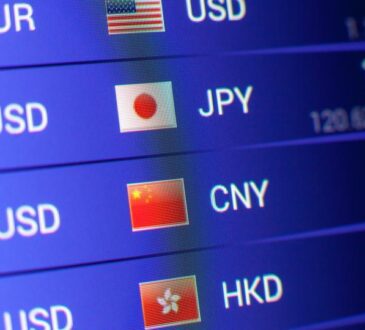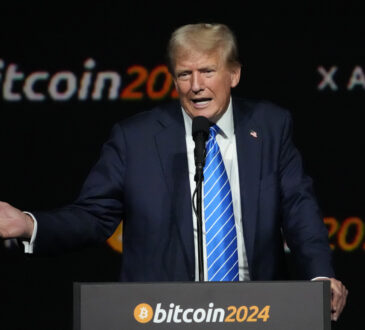
The global forex market is the largest market in the world. It trades over US$ 7.5 trillion daily, according to Bank for International Settlements (BIS) data. The forex market isn’t the only way for investors and traders to participate in foreign exchange, however. It’s not nearly as large as the forex market but the currency futures market has a respectable daily average close to $100 billion.
Currency futures are futures contracts where the underlying commodity is a currency exchange rate. They provide access to the foreign exchange market in an environment that’s similar to other futures contracts. This image shows an example of a price chart of one of the many currency futures contracts.
Key Takeaways
- Currency futures are futures contracts where the underlying commodity is a currency exchange rate.
- Currency futures are also called forex futures.
- Different contracts trade with varying degrees of liquidity.
- The liberal margin rates of many forex accounts provide traders with an opportunity to make impressive gains but they more often suffer catastrophic losses.
Image by Sabrina Jiang © Investopedia 2021
What Are Currency Futures?
Currency futures are also called forex futures or foreign exchange futures. They’re exchange-traded futures contracts to buy or sell a specified amount of a particular currency at a set price and date in the future.
Currency futures were introduced at the Chicago Mercantile Exchange, now known as the CME Group, in 1972 soon after the fixed exchange rate system and the gold standard were discarded. They’re traded in terms of contract months with standard maturity dates typically falling on the third Wednesday of March, June, September, and December, similar to other futures products.
Contract Types
A wide variety of currency futures contracts are available. Aside from the popular contracts such as the EUR/USD (euro/U.S. dollar currency futures contract), there are also E-Micro Forex Futures contracts that trade at 1/10th the size of regular currency futures contracts as well as emerging market currency pairs such as the PLN/USD (Polish zloty/U.S. dollar futures contract) and the RUB/USD (Russian Ruble/U.S. dollar futures contract).
Different contracts trade with varying degrees of liquidity. The daily volume for the EUR/USD contract might be 400,000 contracts versus 33 contracts for an emerging market like the BRL/USD (Brazilian real/U.S. dollar).
Currency Futures Exchanges
Forex contracts are traded via currency brokers but currency futures are traded on exchanges that provide regulation in terms of centralized pricing and clearing. The market price for a currency futures contract will be relatively the same regardless of the broker that’s used.
The CME Group offers 55 currency futures contracts and 46 currency pairs with over $100 billion in daily liquidity, making it the largest regulated currency futures marketplace in the world. Smaller exchanges are present worldwide including the Euronext, the Tokyo Financial Exchange (TFX), and the Brazilian Mercantile and Futures Exchange (BM&F).
Popular Contracts
Traders and investors are drawn to markets with high liquidity because these markets provide a better opportunity for profits. The emerging markets typically have very low volume and liquidity and they have to gain traction before becoming competitive with the other established contracts.
This image shows some examples of currency futures contracts and their specifications.
Image by Sabrina Jiang © Investopedia 2021
Contract Specifications
Futures contracts and currency futures must list specifications that include the size of the contract, the minimum price increment, and the corresponding tick value. This information helps traders determine position sizing and account requirements as well as the potential profit or loss for different price movements in the contract.
The Euro/U.S. dollar contract in the image shows a minimum price increment of .0001 and a corresponding tick value of $12.50. This indicates that the value of the contract will change by $12.50 with the value dependent on the direction of the price change each time a .0001 movement in price occurs.
The .0001 price move would be worth $12.50 to the trader if a long trade is entered at 1.3958 and moves to 1.3959, assuming one contract. The price move would be worth $125.00 ($12.50 X 10 ticks or pips) if that same long trade moves to 1.3968.
Settlement
Buyers and sellers will usually offset their original positions before the last day of trading, a day that varies depending on the contract, by taking an opposite position. A profit or loss is credited to or debited from the trader’s account when an opposite position closes the trade before the last day of trading.
Contracts are sometimes held until the maturity date when the contract is cash-settled or physically delivered depending on the specific contract and exchange. Most currency futures are subject to a physical delivery process four times a year on the third Wednesday of March, June, September, and December.
Only a small percentage of currency futures contracts are settled in the physical delivery of foreign exchange between a buyer and seller. The appropriate exchange and the participant each have duties to complete the delivery when a currency futures contract is held to expiration and is physically settled.
The CME is responsible for establishing banking facilities in the United States and in each country that’s represented by its currency futures contracts. These agent banks act on behalf of the CME and maintain a U.S. dollar account and a foreign currency account to accommodate any physical deliveries.
Futures contracts don’t exist directly between a buyer and a seller. Each participant has a contract with a clearinghouse, greatly reducing the risk for buyers and sellers that a counterparty would fail to meet the terms of the contract.
Oversight
Futures brokers including those that offer currency futures must follow regulations enforced by governing agencies including the Commodity Futures Trading Commission (CFTC) and the National Futures Association (NFA), as well as rules set forth by the exchanges.
The CME Group is the largest futures exchange in the world. It ensures that self-regulatory duties including market integrity protection are fulfilled through its Market Regulation Department by maintaining fair, efficient, competitive and transparent markets.
Currency futures markets have a great deal more oversight than the spot forex markets which are at times criticized for non-centralized pricing and forex brokers trading against their clients.
Account Requirements
Currency futures are exchange-traded futures. Traders typically have accounts with brokers that direct orders to the various exchanges to buy and sell currency futures contracts. A margin account is generally used in the trading of currency futures. A great deal of cash would otherwise be required to place a trade. Traders borrow money from the broker to place trades with a margin account. It’s usually a multiplier of the actual cash value of the account.
Buying power refers to the amount of money in the margin account that’s available for trading. Different brokers have varying requirements for margin accounts. Currency futures accounts generally allow a rather conservative degree of margin or leverage when compared to forex accounts that can offer as much as 400:1 leverage.
The liberal margin rates of many forex accounts provide traders with an opportunity to make impressive gains but they more often suffer catastrophic losses.
Currency Futures vs. Forex
Currency futures and forex are both based on foreign exchange rates but they have many differences:
- The forex spot market is the largest market in the world. Currency futures trade at a fraction of the volume with many currency futures contracts trading under high volume and good liquidity.
- Currency futures are exchange-traded and are regulated like other futures markets. Forex has less regulation and trading is conducted over the counter through forex dealers. There’s no central marketplace.
- Currency futures can be traded using modest leverage. Forex offers the ability to trade with a great deal of leverage, leading to large wins and large losses.
- The tax treatment for profits and losses incurred from currency futures trading and forex trading can differ depending on the particular situation.
- Commissions and fees differ. Currency futures typically involve a commission that’s paid to the broker and other various exchange fees. Forex traders don’t pay these commissions and fees but they’re subject to exchange rate spreads through which the forex dealer profits.
How Is Currency Exchanged?
A licensed business provides services for customers allowing them to trade one currency for another. The cost is the exchange rate at the time the trade is made and this rate is the underlying market of currency futures.
What Is a Spot Market?
A spot market provides immediate delivery and payment for the exchange of financial instruments including currencies, securities, and commodities. It’s the opposite of a futures market where the exchange, delivery, and payment are made at a specified date in the future.
What Is a Typical Futures Commission?
Futures trading commissions fall across a wide range depending on the broker and the volume of trades. Other fees are typically charged as well. The more trades, the lower the fees typically are. Commissions can be a flat or fixed rate or rates can be tiered based on various circumstances.
The Bottom Line
Investors and traders who are interested in participating in the foreign exchange market have options. Forex and currency futures offer traders unique vehicles with which to hedge or speculate. The currency futures market is similar to other futures markets and provides participants with a means of entering the foreign exchange market with greater regulation and transparency.
Disclosure: This article is not intended to provide investment advice. Investing in securities entails varying degrees of risk and can result in partial or total loss of principal. The trading strategies discussed in this article are complex and should not be undertaken by novice investors. Readers seeking to engage in such trading strategies should seek extensive education on the topic.



